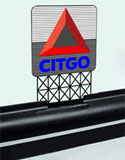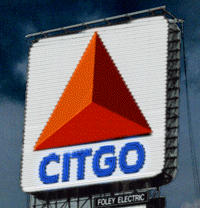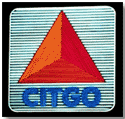 |
 |
|
|
|
|
|
|
|
|
|
|
|
|
|
|
|
|
|
|
|
|
 |
Red Sox Shop Featured Item Citgo sign 
|
| The
Outside of the Chicago ballpark, in the Wrigleyville neighborhood, fans watch the game from the rooftops of the apartments located behind left and right field. Outside of Fenway Park, in Kenmore Square, Boston is home to the CITGO sign. While many are familiar with most of the details that make these ballparks and their surrounding areas so great, the CITGO sign may be one of the sights of taking in a game at Fenway that many first-timers don't know much about. The sign is so famous that CITGO has an area dedicated to it on its Web site. And here's what the Houston, Texas-based gasoline company has to say about their Boston landmark: "CITGO holds an especially important place in Boston. The illuminated sign in Kenmore Square has become a landmark on the Boston skyline. It graces left field at Fenway Park and has seen thousands of athletes to the finish line at the Boston Marathon. It also serves as an excellent orientation point when people are lost in the city. Photographs of the sign appear on postcards, in newspapers, movies, books, tourism brochures and even in Life magazine. During the day, the CITGO sign is an impressive monument. Its bright colors are visible for miles around from its perch in Kenmore Square. And Red Sox fans can't see past left field at Fenway Park without taking in this majestic sign. In the Boston night is when the sign truly comes alive. It has been called the 'crown jewel of Boston' and surges in a hypnotic pattern of ruby red, blue and white neon. It illuminates and mesmerizes in a steady rhythm and dance.
In 1979, at the urging of then Governor Edward J. King, CITGO turned off the sign as a symbol of energy conservation, even though it used only $60 per week worth of power. The sign remained off for four long years. CITGO decided to dismantle the deteriorating sign, but when the work crew arrived, defenders of the sign stopped the demolition. Once again the people of Boston made a difference. Backers of the sign claimed the sign was an excellent example of urban neon art and 'as Boston as baked beans.' The group fought and asked the Boston landmarks commission to declare it a landmark. Boston mothers played an important role in the protest. At one time, the sign was visible from the maternity ward at Beth Israel Hospital, where mothers-to-be timed their contractions by its pulsing flash in the evening sky. Boston was full of landmarks, 22 in fact, and it's hard to fathom that a city with notable landmarks including Paul Revere's home and the Old North Church would consider the CITGO sign in their company. In the end, CITGO, surprised by the uproar, reached an agreement with the commission and offered to refurbish the sign and illuminate it for three years. With the flip of a switch, Kenmore Square was bright again in the night sky. That was in 1983 and the sign is still blinking out its message -- leaving a name, personality and friendly face high in the Massachussetts sky. Best of all, it creates memories for a whole new generation."
The sign still looks the same as it has since 1965, but the LED tubes won't deteriorate in the New England winter, making the sign easier to maintain. LED is also brighter and more intense than neon, and the increased energy efficiency has cut the sign's electric bills in half. The Citgo sign still makes news. In September 2006, a Boston city councilor proposed taking it down after Venezuelan president Hugo Chavez called George Bush "the devil" in a speech made to the United Nations. Citgo has been a wholly owned subsidiary of the Venezuelan state oil company since 1990. On October 15, 2008, the Citgo sign caught on fire. The small electrical blaze that started inside of the sign was quickly extinguished by firefighters, but not before it caused $5,000 in damages.
|


